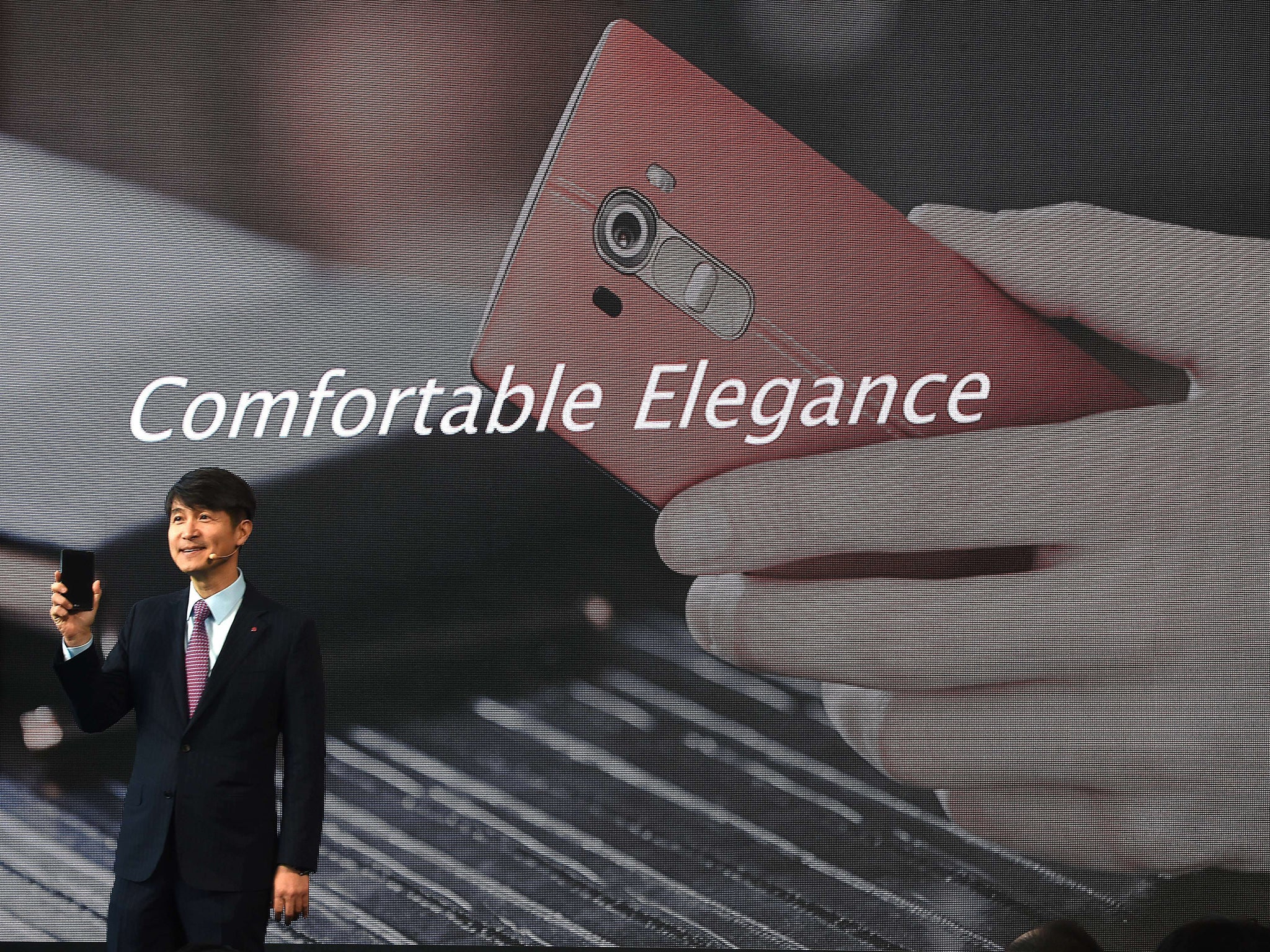LG G4 review: hands-on with company's new leathery, slick, camera-focused new phone
A removable battery and leather back will help this phone stand out from competitors — but will that be enough?

After the splashy and occasionally spectacular launch of LG’s latest flagship smartphone, the LG G4, hands-on time at the London event was limited but useful.
First, the leather back feels great in the hand: smooth but textured and definitely not slippy like pretty much every other smartphone on the market with its glass, plastic or metal back. The leather doesn't make it seem to make it any thicker, either, so there’s no usability sacrifice to be made.
This, remember, is a phone that only has one button on its entire case. The power and volume combined button sits on the back, so you’re likely to be touching the back a lot. It’s true that you can wake the screen by tapping it, which is handy if it’s lying on the table, but this is very much a phone to have in your hand.
Like the G3, it’s a big phone, thanks to its 5.5-inch display. The display is the same size and resolution as last year’s handset, though a different technology (QHD IPS Quantum Display is what LG calls it) promises super-sharpness and vibrant colours. At first glance, this looked bright and dazzling, and though in the company’s presentation the colours looked horrendously over-saturated, on the phone itself things were largely okay.
It’s noticeable that LG hasn’t increased the screen size compared to last year – perhaps 5.5 inches is the company’s idea of a sweet spot. It’s bigger than every rival phone – flagships from Apple, Sony, Samsung and HTC all measure between 4.7 inches and 5.2 inches. The greatest pixel density is on Samsung’s Galaxy S6 which matches the 1440 x 2560 pixels of the LG but on a smaller, 5.1-inch display.
That fits the hand better, to be honest, though the curved back of the G4 helps to make this phone more manageable. There’s also a slight curve to the screen itself though not as marked as on the recent G Flex 2. It’s designed so the phone fits the face more naturally as you’re making a call (a negligible effect) and to show off LG’s considerable technical prowess (fair enough).
Unlike pretty much all rivals’ phones, this flagship has a removable battery, so you can feel secure that you’ll never run out of juice. Let’s look at this one: for this to work you do need to purchase and carry a spare battery, not to mention a spare battery charger because the usual place to charge a battery is inside the phone itself, so you can only do one at a time, obviously.
And a built-in battery has several advantages – a more solid, creak-free case thanks to the unibody design and the facility for extra features such as water-resistance. And built-in batteries can be that bit bigger because there’s no need to build the walls needed inside the phone if the cell is removable.
Furthermore, battery life is currently the best it’s ever been – the iPhone 6 is a revelation compared to earlier Apple handsets and phones like the Sony Xperia Z3 just go on and on.
And since removable battery packs are light and affordable, not to mention easily recharged, it’s simpler to carry one of those than a spare dedicated battery, I’d say. For instance. the newly released Monster Powercard Turbo is the same size as a credit card (though, oh boy, it’s thicker). It costs £50, is more powerful than the LG’s built-in cell and recharges very quickly. This sounds to me a better bet than a second LG battery and it’ll work with your next phone, whatever that is, too.
Never mind, if you want an accessible battery, LG has your back, and a removable one at that. I didn't detect any creak in the phone when I flexed it, though time will tell.
LG was proud of the new, improved camera, mostly down to a wider aperture (now f/1.8 which benefits lower light situations), a bigger sensor and new software elements. Such as a double-press on that rear button to wake the phone, launch the camera and take a shot, all in less than a second. There’s also the laser-powered autofocus which promises to be quick – and it sounds alluring. Manual overrides led LG to make claims that this now rivals an SLR and is good enough for professional photographers to carry as their second camera. We’ll see – it’s hard to see a camera with no optical zoom rivalling one that does.
And though the 16-megapixel sensor is certainly bigger (1/2.6 inches) than some it’s the same size as the Samsung Galaxy S6 and smaller than the sensors in the HTC One M9 and Sony Xperia Z3.
LG is currently at the top of its game and the G4 is of course its most advanced handset. But changes compared to last year’s model are gentle rather than radical. That’s fine – Sony’s Xperia Z3 was only marginally better than the Z2, for instance.
But the flagships released by Apple and Samsung in the last year are game-changing leaps forward. We’re still waiting for Samsung’s sales figures but Apple’s have been astonishing – this may not be the time for gentle upgrades in the face of that competition.
Join our commenting forum
Join thought-provoking conversations, follow other Independent readers and see their replies
Comments